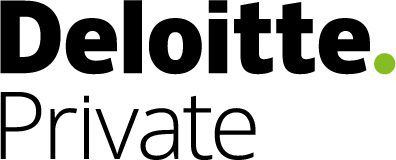

By the end of 2019, as much as $3 trillion in lease liabilities[1] will have landed on the balance sheets of U.S. public companies. The driver is Accounting Standards Codification (ASC) Topic 842, Leases,the Financial Accounting Standards Board’s (FASB’s) new standard on lease accounting.
ASC 842 changes the way companies account for their leases. It is intended to provide investors with a clearer picture of what companies owe through their lease obligations—including those for equipment and real estate. ASC 842 became effective in January 2019 for public companies with calendar year-ends. In February 2019, nearly half of public company executives Deloitte polled[2] told us they saw no slowdown ahead in the time and effort to be spent on compliance.
In July 2019, the FASB tentatively pushed back the effective date for nonpublic business entities (private companies), but the delay doesn’t change what promises to be a rigorous implementation effort.[3] What can private companies discover from the public company implementations of ASC 842? Here are some of the highlights.
1. Not every lease is clearly labeled “lease.”
Leases can be embedded in many different kinds of contracts and aren’t always labeled or defined within those contracts as “leases.” Transportation service agreements, information technology (IT) service contracts, and electronic contract manufacturing arrangements are common examples of contracts with embedded leases. In essence, if an agreement conveys the right to control the use of a specified asset over a period of time in exchange for consideration, it may be a lease—even if it’s part of a broader contract for other goods or services.
2. Leases can be found across the organization.
When public companies began transitioning to ASC 842, many discovered leases across numerous departments, business units and office locations, and they were tracked in various administrative systems, intranet sites, and desktop spreadsheets. Often, documents were stored as images, searchable PDF files or hard copies, requiring considerable detective work to identify a full population of leases.
3. Lease data requires considerable judgment to parse.
Under ASC 842, companies should keep track of critical dates, payment amounts and other relevant information about the right of use that a contract conveys. These provisions can get complicated, and amendments can make them even more so. Add foreign-language leases that reflect the nuances of local markets and it becomes clear that it takes considerable thought to interpret the data required for reporting.
4. Expect to source data from multiple places.
A lease agreement does not spell out everything required to meet ASC 842 accounting and disclosure mandates. For example, determining the appropriate discount rate and fair market value of a leased asset often requires management judgment and—in some cases—the use of quantitative modeling. There are other data requirements that may not be derived directly from the lease agreement, in which case an alternative data-sourcing approach may be required.
5. Controls and processes may need an upgrade.
Legacy U.S. GAAP might have left room for decentralized lease processes, but that’s often less practical and efficient under ASC 842. Beyond the required internal controls and processes that companies need to produce financial statements in a clear and efficient manner, there’s also controls related to impairment accounting, modification accounting, and reconciliation between actual and contractual cash flows.
6. Technology helps—but may need plenty of runway.
ASC 842 rules require significantly more data and calculations to produce the required journal entries and disclosures. The upshot is that manual processes may be less practical—not just for lease data maintenance, but for compliance and management reporting as well. It’s worth taking time to confirm that a technology solution has the applicable functionality, as well as gaining an understanding of how long the implementation could take, before implementing a technology solution as it may be longer than anticipated.
7. An incremental borrowing rate is full of moving parts.
ASC 842 requires public company lessees to record leases on the balance sheet using their collateralized incremental borrowing rate (IBR), which can be a complicated process. Fortunately, private companies have an alternative: using a risk-free rate instead of an IBR. That said, the risk-free rate election generally results in a higher lease liability and the election is invalidated if a company goes public, in which case the company will need to go back and calculate its own IBR separately. Having existing debt may not be enough to determine the company’s IBR: It depends on the nature of the company’s debt, lease term, and lease currency. The nuances of establishing rates—think identification of the appropriate entity-specific credit risk adjustment or the impact of full collateralization—are what make IBR more complicated than what many companies expect.
8. Other departments will likely need to get involved.
ASC 842 implementation isn’t just an accounting endeavor. Procurement, for instance, may be needed to help pull together the full population of leases. The tax department may need to determine deferred tax assets and liabilities. If a lease accounting software solution includes lifecycle management functionality, real estate personnel should review it to determine if it’s useful from their perspective, and, of course, IT should approve and support the technology implementation. Business units should also be involved since they may need to monitor and maintain the leases to which they’re closer.
9. Affected groups can all benefit from ASC 842 adoption.
Companies can’t avoid the new standard, so they should make the most of it. A carefully thought-out ASC 842 implementation can yield enhanced analytics, modeling and forecasting capabilities. At the same time, new lease accounting processes can jumpstart related initiatives such as procurement or real estate management and optimization, contract management, and compliance and contract digitization. The result? Potentially more effective decision-making and improved performance across the portfolio of leased assets.
The bottom line
The new standard dramatically increases the number of leases that companies may need to record on their balance sheets. The good news is that many of the key stumbling blocks of ASC 842 implementation are now known—and each is manageable. With appropriate planning, private companies can equip themselves for a smoother transition to this landmark update in lease accounting. To find out more about Audit and Assurance Services for Private Companies, click here.
***
This publication contains general information only and Deloitte is not, by means of this publication, rendering accounting, business, financial, investment, legal, tax, or other professional advice or services. This publication is not a substitute for such professional advice or services, nor should it be used as a basis for any decision or action that may affect your business. Before making any decision or taking any action that may affect your business, you should consult a qualified professional advisor.
Deloitte shall not be responsible for any loss sustained by any person who relies on this publication.
The services described herein are illustrative in nature and are intended to demonstrate our experience and capabilities in these areas, however due to independence restrictions that may apply to audit clients (including affiliates) of Deloitte & Touche LLP, we may be unable to provide certain services based on individual facts and circumstances.
 About Deloitte
About Deloitte
Deloitte refers to one or more of Deloitte Touche Tohmatsu Limited, a UK private company limited by guarantee (“DTTL”), its network of member firms, and their related entities. DTTL and each of its member firms are legally separate and independent entities. DTTL (also referred to as “Deloitte Global”) does not provide services to clients. In the United States, Deloitte refers to one or more of the US member firms of DTTL, their related entities that operate using the “Deloitte” name in the United States and their respective affiliates. Certain services may not be available to attest clients under the rules and regulations of public accounting. Please see www.deloitte.com/about to learn more about our global network of member firms.
Copyright © 2019 Deloitte Development LLC. All rights reserved.
[1] “A big change in accounting will put $3 trillion in liabilities on corporate balance sheets,” Yun Li, CNBC, February 16, 2019, https://www.cnbc.com/2019/02/15/a-big-change-in-accounting-puts-3-trillion-on-corporate-books.html.
[2] Deloitte Development LLC “Lease accounting compliance work won’t end after Q1 2019 public filings” https://www.slideshare.net/DeloitteUS/lease-accounting-compliance-work-wont-end-after-q1-2019-public-filings, (April 1, 2019)
[3] “FASB Tentatively Changes Effective Dates for New Accounting Standards,” Zack Weston and Mark Bolton, Deloitte & Touche LLP, July 2019, https://www2.deloitte.com/us/en/pages/audit/articles/heads-up-newsletter.html.



0

1:00 - 5:00 pm
Over 70% of Executives Surveyed Agree: Many Strategic Planning Efforts Lack Systematic Approach Tips for Enhancing Your Strategic Planning Process
Executives expressed frustration with their current strategic planning process. Issues include:
Steve Rutan and Denise Harrison have put together an afternoon workshop that will provide the tools you need to address these concerns. They have worked with hundreds of executives to develop a systematic approach that will enable your team to make better decisions during strategic planning. Steve and Denise will walk you through exercises for prioritizing your lists and steps that will reset and reinvigorate your process. This will be a hands-on workshop that will enable you to think about your business as you use the tools that are being presented. If you are ready for a Strategic Planning tune-up, select this workshop in your registration form. The additional fee of $695 will be added to your total.

2:00 - 5:00 pm
Female leaders face the same issues all leaders do, but they often face additional challenges too. In this peer session, we will facilitate a discussion of best practices and how to overcome common barriers to help women leaders be more effective within and outside their organizations.
Limited space available.

10:30 - 5:00 pm
General’s Retreat at Hermitage Golf Course
Sponsored by UBS
General’s Retreat, built in 1986 with architect Gary Roger Baird, has been voted the “Best Golf Course in Nashville” and is a “must play” when visiting the Nashville, Tennessee area. With the beautiful setting along the Cumberland River, golfers of all capabilities will thoroughly enjoy the golf, scenery and hospitality.
The golf outing fee includes transportation to and from the hotel, greens/cart fees, use of practice facilities, and boxed lunch. The bus will leave the hotel at 10:30 am for a noon shotgun start and return to the hotel after the cocktail reception following the completion of the round.